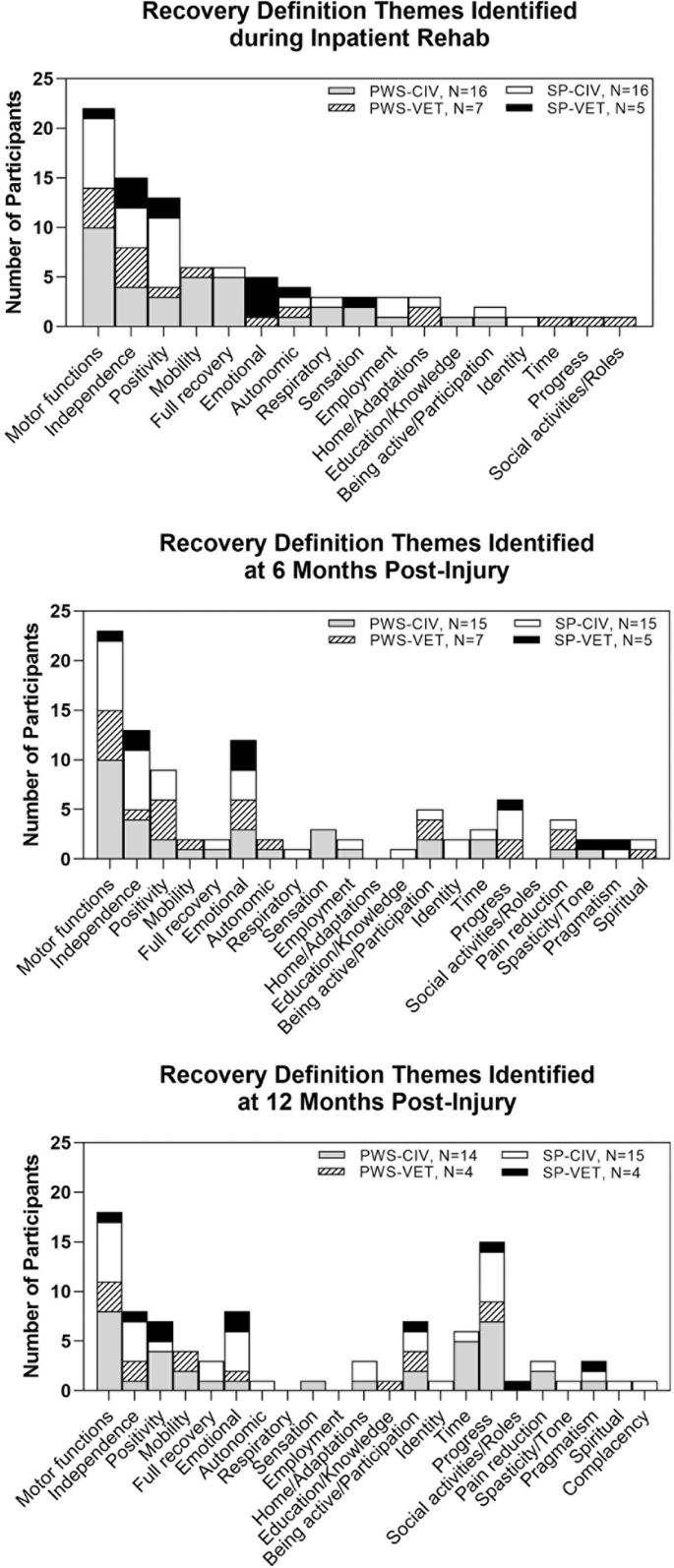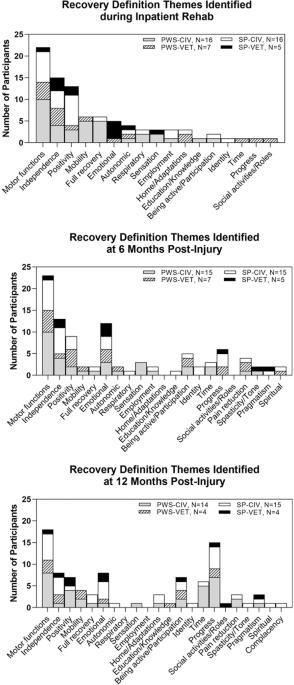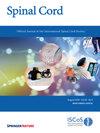第一年康复和重返社会的定义:对脊髓损伤者和照顾者观点的定性研究。
IF 2.1
4区 医学
Q3 CLINICAL NEUROLOGY
引用次数: 0
摘要
研究设计纵向、定性队列研究:了解新获得性脊髓损伤(PWS)患者及其支持者(SP)如何定义受伤后最初 12 个月内的康复和成功重返社区(CR),以及他们对康复和重返社区的满意度:方法:对美国中西部的学术医院和退伍军人医院进行深入的半结构式调查:方法:在最初住院康复期间、6 mpi 和 12 mpi,对两组 PWS 和 SP 进行了深入的半结构式访谈。记录被转录;四位作者独立进行逐行编码。研究小组对编码进行了讨论,以达成共识,并在国际功能、残疾和健康分类以及转型框架内将其归纳为更广泛的主题:结果:报告了 23 例 PWS 和 21 例 SP 的数据。在将康复定义为获得运动功能和实现独立方面,PWS 和 SP 相似。然而,SP 更多地将康复定义为保持积极性和情感康复。在 12 mpi 时,两组患者都转而根据进展情况来定义康复。社会角色、活跃和就业是 PWS 和 SP 界定成功 CR 的持续主题。然而,SP 也经常将成功 CR 定义为重建身份和情绪调整。患有 SCI 的退伍军人较少将成功 CR 定义为就业:本研究首次揭示了 PWS 和 SP 如何定义头 12 个月的康复和重返社会。鉴于住院时间不断缩短,这些信息可用于在受伤后关键的第一年内制定康复策略,以优化康复效果。本文章由计算机程序翻译,如有差异,请以英文原文为准。


Definitions of recovery and reintegration across the first year: A qualitative study of perspectives of persons with spinal cord injury and caregivers
Longitudinal, qualitative cohort study. To understand how people with newly acquired spinal cord injury (PWS) and their support person (SP) define recovery and successful community reintegration (CR) across the first 12 months post-injury (mpi) and their satisfaction with the rate of recovery and reintegration experienced. Academic and Veterans hospitals in Midwest USA. In-depth, semi-structured interviews were conducted in two cohorts of PWS and SP during the initial inpatient rehabilitation stay, at 6 mpi, and at 12 mpi. Recordings were transcribed; four authors independently undertook line-by-line coding. The team discussed codes to reach consensus and synthesize into broader themes within the International Classification of Function, Disability, and Health and Transformative frameworks. Data are reported on 23 PWS and 21 SP. PWS and SP are similar in defining recovery as gaining motor function and achieving independence. However, SP more frequently define recovery in terms of maintaining positivity and emotional recovery. At 12 mpi both groups shift to define recovery according to progress. Social roles, being active, and employment are persistent themes of how PWS and SP define successful CR. However, SP also frequently define successful CR as reestablishing identity and emotional adjustment. Veterans with SCI less frequently defined successful CR as employment. This study is the first to reveal how PWS and SP define recovery and reintegration during the first 12 mpi. Given decreasing lengths of stay, this information can be used to tailor rehabilitation strategies during the critical first year of injury to optimize recovery.
求助全文
通过发布文献求助,成功后即可免费获取论文全文。
去求助
来源期刊

Spinal cord
医学-临床神经学
CiteScore
4.50
自引率
9.10%
发文量
142
审稿时长
2 months
期刊介绍:
Spinal Cord is a specialised, international journal that has been publishing spinal cord related manuscripts since 1963. It appears monthly, online and in print, and accepts contributions on spinal cord anatomy, physiology, management of injury and disease, and the quality of life and life circumstances of people with a spinal cord injury. Spinal Cord is multi-disciplinary and publishes contributions across the entire spectrum of research ranging from basic science to applied clinical research. It focuses on high quality original research, systematic reviews and narrative reviews.
Spinal Cord''s sister journal Spinal Cord Series and Cases: Clinical Management in Spinal Cord Disorders publishes high quality case reports, small case series, pilot and retrospective studies perspectives, Pulse survey articles, Point-couterpoint articles, correspondences and book reviews. It specialises in material that addresses all aspects of life for persons with spinal cord injuries or disorders. For more information, please see the aims and scope of Spinal Cord Series and Cases.
 求助内容:
求助内容: 应助结果提醒方式:
应助结果提醒方式:


